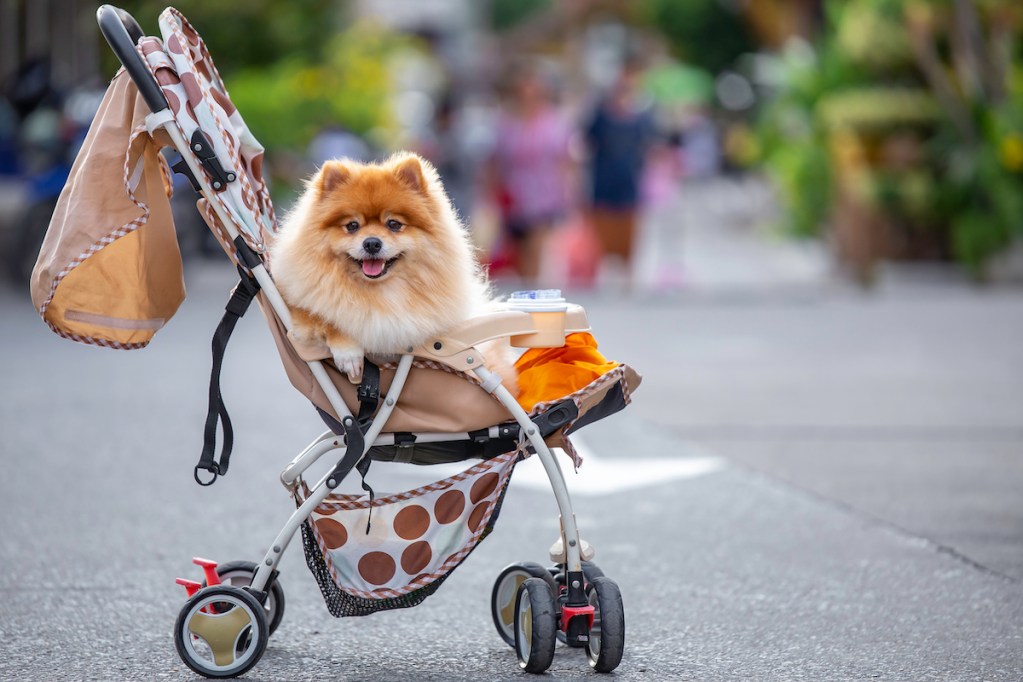
You might do a double take the first time you see a dog being wheeled around, but we’re 100% behind this trend. Dog strollers seem to have taken over, especially in big cities and other areas with heavy foot traffic, like parks. While it wouldn’t work for every animal, lots of small breeds and elderly pups benefit from being pushed around. Should you hop on the trend and get dog strollers for your furry friends? It’s definitely worth a little research.
Which dogs benefit most from riding in a baby buggy?
You probably won’t see a Great Dane in a stroller, but we certainly encourage you to try if you can do so safely. A stroller will most benefit a small dog, particularly if they struggle to keep up or may not always be seen by passersby. It also will work great for an elderly dog that has slowed down but still loves having outdoor time with their family.
Why should I consider a dog stroller?
If you balk at the idea of keeping your pet in a stroller, you’re not alone. But we encourage you to rethink things a little bit, as many fur babies do seem to enjoy being walked in this way. There are a few good reasons to give it a try.
Navigating crowds
Little dogs often get lost in big crowds and can wind up getting stepped on or accidentally kicked. If you’re bringing your buddy to an event, you should definitely consider taking the stroller along. This way, they can perch from a high vantage point and experience everything around them without any danger.
Taking longer walks
Planning a longer hike but still want to bring along your small dog? A stroller could come in handy, provided you have ample paved roads available. One option is to let them walk for the first half of the journey and then pop them in to ride the rest of the way home.
Keeping pets active
With older or injured dogs, you won’t always know when they’re likely to poop out. A dog stroller helps keep the option of a break open at any time. As soon as they start to slow down, you can offer the ride, and some dogs will learn to tell you when they’re ready by going up to it when it’s time.
Which stroller should I buy?
There are a few out there to consider, depending on your beastie’s preferences and where you imagine using it most.
Folding Waterproof Portable Pet Stroller
You might think of this one as because the basket piece lies down. Many dogs prefer this orientation, as it allows them to move around more fluidly.
Pet Stroller, Carrier, Jogger Stroller, Folding Crate Stroller With Soft Pad
The best part is that it takes two animals, one on each level. Additionally, it’s designed for jogging, so can move seamlessly at a faster clip.
Gear Happy Trails Lite No-Zip Pet Stroller
The most , you’ll like the no-zip option if you might need to pop in quickly to grab your pooch, if they get scared easily, for example.
So the next time you see a puppy nose peeking out of a stroller, consider jumping on the trend and adding a dog stroller to your pet’s accessory pile. It may seem a touch elaborate, but it’s worth it if your dog gains more mobility.



